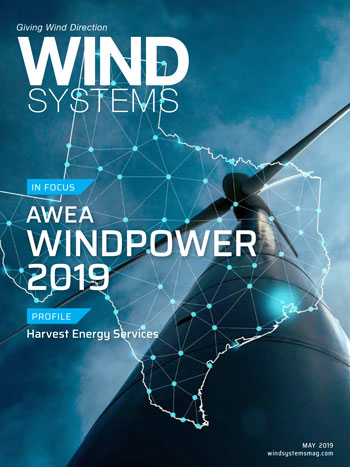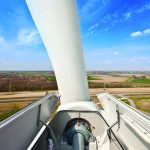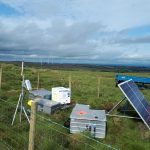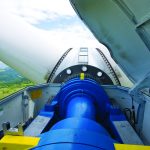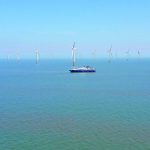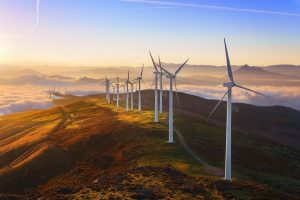American wind power continued to push forward and reach new heights in 2018 — it was a record-setting year for corporate wind purchasing as customer demand for affordable, reliable, and clean energy continued to rise. Technology progressed further and more of the country’s electricity came from wind energy than ever before. That also means more families and businesses are seeing the benefits wind delivers to their communities. New, well-paying jobs, land-lease payments, and additional tax revenue, billions of dollars in investment, and greater access to renewable energy are just some of the advantages.
Companies large and small are taking advantage of the opportunities wind offers. C&I customers purchased 66 percent more wind power in 2018 than 2015 — the previous record year — with a total of 4,203 MW of deals signed. American businesses and non-utility purchasers such as universities and municipalities are attracted to wind’s low cost and price stability that protects them from fuel price spikes. For many businesses, wind is a way to meet their sustainability goals while locking in a predictable electricity price for years to come. This helps companies plan better for the future. And wind is the top choice for C&I customers. Data from the Business Renewables Center shows that wind provides more energy to corporate brands than any other renewable source.
“It’s the Un-carrier way to do the right thing by our customers, and moving to renewable energy is just a natural part of that,” said John Legere, president and CEO at T-Mobile. “And it’s not just the right thing to do — it’s smart business. We expect to cut T-Mobile’s energy costs by around $100 million in the next 15 years thanks to this move. Imagine the awesome things we can do for our customers with that.”
A diverse group of companies joined T-Mobile in signing wind deals in 2018. Last year saw a mix of repeat buyers including Walmart, Facebook, and Microsoft and first-time buyers such as AT&T, Shell Energy, Boston University, and Royal Caribbean Cruise Lines. These buyers join a growing list of companies choosing wind through long-term contracts, or power purchase agreements (PPAs).
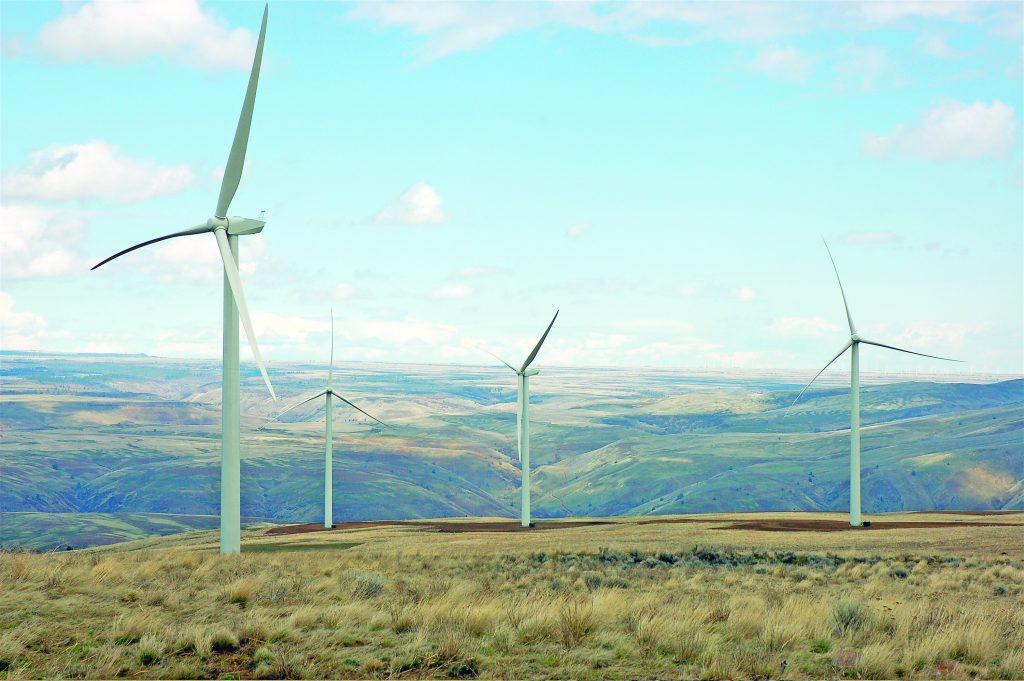
On top of the cost savings and stability, the fact of the matter is more and more customers are demanding renewable energy. That has presented businesses an opportunity to directly respond to their customers’ desires. Look no further than the media boon Budweiser received for its 2019 Super Bowl commercial, which boasted about the company’s decision to brew 100 percent of its beer using wind power.
“As a leading brewer, Anheuser-Busch understands sustainability is not just related to our business, it is our business,” said Angie Slaughter, vice president of Sustainability at Anheuser-Busch. “We are proud that Budweiser is the first major beer brand to be brewed with 100 percent renewable electricity from wind power; we hope our efforts inspire others in our pursuit for a more sustainable future.”
Installed wind capacity hits a new high
Strong customer enthusiasm and positive market signals last year spurred significant new wind power installations. The fourth quarter of 2018 was the third highest on record for wind capacity installations across the country with more than 5,944 MW installed. This brings the total installed capacity of the U.S. to more than 96,488 MW, enough to power 30 million homes. Looking forward, seven states are now on track to double their installed wind capacity in the next few years.
Technology takes wind to the next frontier
Technological innovations and improved siting practices have also made wind turbines more efficient and increased their value to consumers. These improvements have driven the cost of wind down by 69 percent since 2009, making it the cheapest source of new generating capacity in many parts of the country. Advances in modern turbines help them reach stronger, steadier winds, which improves production and capacity factors. And improved performance helps drive more growth.
Notably, 2018 saw orders for the first 4 MW land-based turbines — nearly twice the capacity of the average U.S. turbine model in 2017. These more powerful turbines let developers better customize individual projects to better suit their local wind resource and the needs of their host community.
Technological advancements and wind-related R&D are also opening the potential of wind power’s next great frontier — offshore. Offshore wind development leapt into serious action in 2018 and that momentum shows no signs of slowing in 2019.
Offshore is coming ashore
Since the Block Island Wind Project became the country’s first operational offshore wind farm at the end of 2016, coastal states have been racing to gain a competitive edge for the burgeoning sector. Last August, Massachusetts passed legislation setting its offshore target to 3.2 GW by 2035. Already in 2019, New York Gov. Andrew Cuomo tripled his state’s offshore target to 9 GW by 2035, raising the bar for the sector nationwide and boosting offshore wind’s prospects.
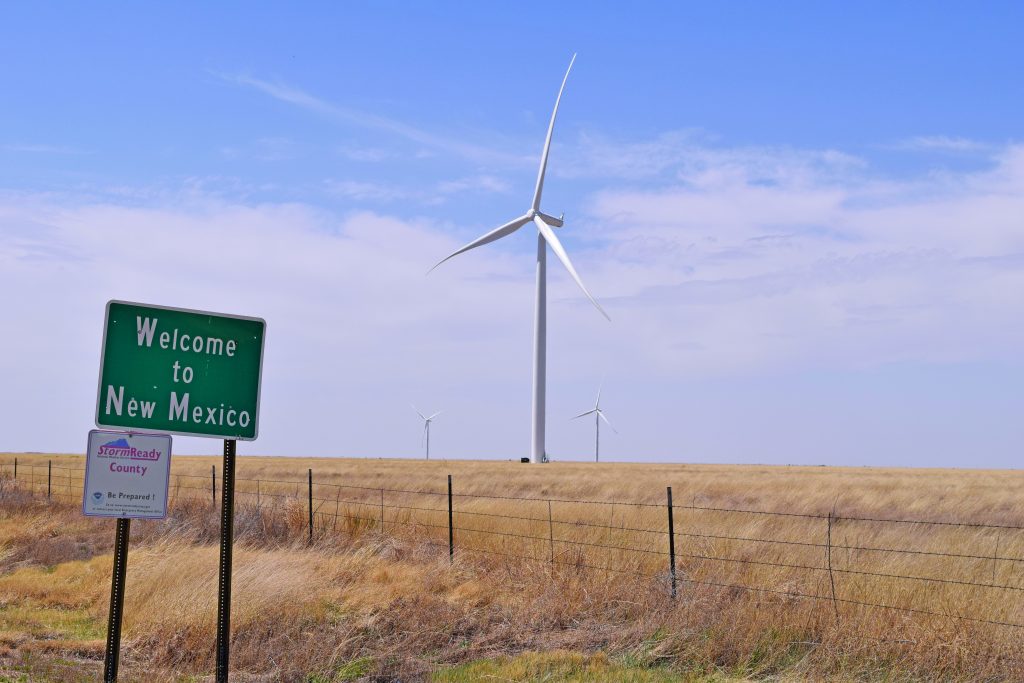
States are also investing in critical infrastructure and technology that will make offshore wind a success. Take Massachusetts, which made improvements to the New Bedford Marine Commerce Terminal to accommodate turbine parts and increased shipping traffic. Or look to MHI Vestas’ $35 million offshore gearbox testing facility at Clemson University in South Carolina. Physical infrastructure is only part of the puzzle. Just as onshore wind created thousands of jobs, the offshore wind sector expects to create thousands more as it matures. Many states are already investing in their workforce to train residents to fill the new positions.
“The industry is moving at a phenomenal pace,” said Walter Cruikshank, acting director at the Bureau of Ocean Energy Management (BOEM). “There is great industry-wide confidence in the market …There are strong policy commitments from the states, particularly in the Northeast and mid-Atlantic, and a strong commitment from this Administration. We are actively working with leaseholders to move their projects forward.”
Innovations in turbine technology and new supply chains will continue to bring down the cost of offshore wind in the U.S. The deployment of new turbine models and offshore technology will continue to show that the United States’ world-class offshore wind resource is ripe for harvesting.
In December, BOEM held a major auction for three parcels off Massachusetts’ Martha’s Vineyard. The winning bids made by Equinor, Mayflower Wind Energy, a joint venture of Shell and EDP Renewables, and Vineyard Wind totaled more than $405 million. These results show that offshore wind is finally coming ashore in America. The auction shows the water is fine, and major international players in the industry are ready to jump in.
A successful year amplifies benefits
Wind’s growth is helping deliver benefits to communities across the country. More than 114,000 Americans across 50 states now work directly in wind. And the industry continues to create jobs: For example, wind-turbine technician is the second-fastest-growing profession in the country, according to the U.S. Bureau of Labor Statistics. The profession is second only to solar installer. Nowhere have these jobs made more of a difference than in America’s rural communities, where 99 percent of the country’s wind fleet is located.
Jobs supported by the construction and operation of wind farms have created new opportunities for many to make a living without having to leave their hometown to find a job elsewhere. For many small towns across America, this has helped keep families together.
Nathan Simpson, a wind-energy instructor at Northeast Community College in Nebraska, observed this firsthand in his town.
“We have a lot of rural communities in our area that seem to be phasing out or growing smaller as time goes on,” he said. “Right now, with the new wind farms coming in, they provide that career path for a lot of those people who want to stay around their community and grow and develop or raise their families, to stick around and find a well-paying job, a job that gives back to their own community.”
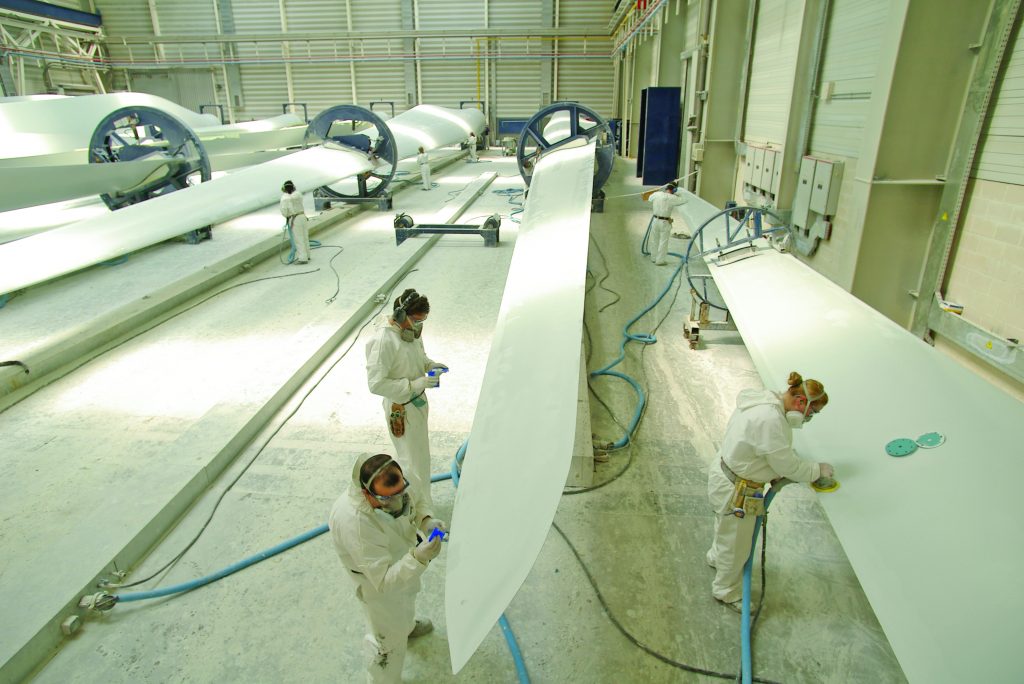
Wind development also helps provide financial stability for many rural landowners — wind projects pay more than $289 million in land-lease payments each year. This number will only grow as more projects come online. These payments provide a dependable income, which hedges against poor crop yields, making wind a drought-proof cash crop for many farmers and ranchers. And because the typical wind farm leaves 99 percent of the land in its footprint untouched, wind is a value-add to the property, keeping most of the land usable for other purposes such as farming or ranching.
Meanwhile, new tax revenue and other payment arrangements from wind companies support local schools, public services, and law enforcement. In 2018, the industry paid more than $1 billion to state and local governments and private landowners in tax and lease payments. For many rural counties, wind-farm payments represent an enormous opportunity and boon to the county coffers.
“Wind energy … is transforming low-income rural areas in ways not seen since the federal government gave land to homesteaders 150 years ago,” the Omaha World-Herald reported. “As commodity prices threaten to reach decade lows and farmers struggle to meet debt payments, wind has saved family farms across a wide swath of the heartland.”
Wind has been able to do all this by providing a low-cost, reliable energy product that both makes good economic sense and delivers environmental benefits.
Wind boasts among the lowest environmental impacts of any utility-scale source of electricity generation. In 2018 alone, wind power created $9.4 billion in public health savings by cutting down air pollution that creates smog and triggers asthma attacks.
Keeping the momentum strong
Even as the markets are choosing wind, stable policies and infrastructure investment will play important roles in ensuring the U.S. wind industry keeps growing. At the top of the to-do list is updating and expanding America’s electric grid to meet 21st century needs. Investments in the grid will make electricity more affordable and reliable for American families and businesses. They’ll pave the way for a new clean energy economy, much like the creation of the interstate highways system in the 1950s unleashed decades of economic growth. Importantly, studies routinely show that transmission upgrades more than pay for themselves.
As more states and businesses recognize the value wind power delivers, the future looks bright. This will come into clearer focus following the release of the American Wind Energy Association’s 2018 Annual Market Report in April and in the run-up to AWEA’s WINDPOWER 2019 Conference on May 20-23 in Houston.
















